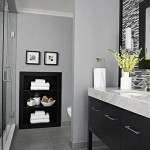How to Decorate a Patio With Flower Pots
Transforming a patio into a flourishing outdoor sanctuary can significantly enhance the aesthetic appeal and usability of any living space. Flower pots offer a versatile and accessible means to introduce color, texture, and life to an otherwise potentially sterile environment. The selection and arrangement of flower pots, coupled with the appropriate plant choices, are critical to achieving a visually appealing and functional patio design. This article will explore various methods and considerations for effectively decorating a patio using flower pots.
Before embarking on the decoration process, a thorough assessment of the patio space is crucial. This assessment should consider the dimensions of the patio, the amount of sunlight it receives, the existing architectural style, and the prevailing environmental conditions. Understanding these factors will inform the selection of appropriate pot sizes, materials, and plant species. A smaller patio will necessitate a more strategic placement of pots to avoid overcrowding, while a larger patio can accommodate a wider variety of sizes and arrangements.
Sunlight is a primary determinant in plant selection. A patio that receives full sun will be suitable for sun-loving plants like succulents, geraniums, and petunias. Conversely, a shaded patio will thrive with shade-tolerant plants such as ferns, hostas, and impatiens. Ignoring these sunlight requirements will likely result in stunted growth, lackluster blooms, or even plant mortality. The existing architectural style of the house and patio should also influence the aesthetic choices. A modern home might benefit from sleek, minimalist pots in neutral colors, while a traditional home could be complemented by terracotta pots or those with ornate detailing.
Selection of Flower Pots: Materials, Sizes, and Styles
The material of the flower pot significantly impacts its durability, weight, and aesthetic appeal. Common materials include terracotta, ceramic, plastic, concrete, and metal. Each material offers distinct advantages and disadvantages. Terracotta pots are porous, allowing for good air circulation and drainage, which is beneficial for many plants. However, they are also more fragile and susceptible to cracking in freezing temperatures. Ceramic pots offer greater aesthetic variety with numerous glazes and designs, but they can also be heavy and expensive.
Plastic pots are lightweight, inexpensive, and resistant to cracking. However, they may not be as aesthetically pleasing as terracotta or ceramic and can retain excess moisture, potentially leading to root rot if drainage is not properly managed. Concrete pots are extremely durable and can provide a contemporary look, but they are very heavy and difficult to move. Metal pots, like those made from galvanized steel or aluminum, are durable and resistant to weathering. They can add an industrial or modern touch, but they can also heat up quickly in direct sunlight, potentially harming plant roots. The choice of material should therefore balance aesthetic preferences with practical considerations related to weight, durability, and drainage.
The size of the flower pot should be proportional to the size of the plant it will contain. A general rule of thumb is to select a pot that is slightly larger than the plant's root ball to allow for growth. Overly large pots can lead to waterlogged soil, while pots that are too small will restrict root growth and may require more frequent watering. For larger plants like small trees or shrubs, larger and more substantial pots are necessary to provide adequate support and stability. For smaller plants like herbs or annual flowers, smaller pots are suitable. The shape of the pot can also influence its suitability for certain plants. Taller, narrower pots are suitable for plants with deep root systems, while wider, shallower pots are better for plants with shallow root systems.
The style of the flower pot should complement the overall aesthetic of the patio and the surrounding landscape. For a formal patio, classic shapes and neutral colors might be preferred. For a more casual patio, brightly colored pots or pots with unique designs can add personality and charm. Consider incorporating a variety of pot styles to create visual interest. Mixing different shapes, sizes, and materials can add depth and complexity to the patio design. However, it is important to maintain a cohesive overall aesthetic by selecting pots that share a common element, such as color or style. Consider the existing architectural style of the house and patio when selecting pot styles. A modern home might benefit from sleek, minimalist pots, while a traditional home might be complemented by terracotta pots or those with ornate detailing.
Strategic Placement and Arrangement of Flower Pots
The arrangement of flower pots on a patio can significantly impact the overall visual appeal and functionality of the space. Consider factors such as traffic flow, focal points, and vertical space when planning the layout. Placing larger pots near the edges of the patio can create a sense of enclosure and define the space. Smaller pots can be grouped together to create visually interesting clusters. Avoid placing pots in areas that obstruct walkways or create tripping hazards. Traffic flow should be smooth and unobstructed.
Creating a focal point is an effective way to draw the eye and create visual interest. This can be achieved by placing a large, eye-catching pot in a prominent location, such as near the entrance to the patio or at the end of a pathway. The focal point pot can be filled with a dramatic plant, such as a flowering shrub or a tall ornamental grass. Consider using a decorative trellis or obelisk to add height and visual interest to the focal point.
Vertical space is often underutilized on patios. Utilizing vertical space with hanging baskets, wall-mounted planters, or tiered plant stands can add depth and dimension to the design. Hanging baskets are ideal for cascading plants like petunias or trailing succulents. Wall-mounted planters can be used to create a green wall effect, adding a touch of natural beauty to vertical surfaces. Tiered plant stands allow for the display of multiple plants in a compact space. Different levels of pots can create a dynamic display. Consider using plant stands or risers to elevate some pots and create visual variation.
Plant Selection and Ongoing Maintenance
Selecting the right plants for flower pots is essential for creating a thriving and visually appealing patio. Consider factors such as sunlight requirements, water needs, and bloom times when choosing plants. Grouping plants with similar needs together will simplify watering and maintenance. For example, succulents and cacti prefer well-drained soil and infrequent watering, while ferns and hostas prefer moist soil and shade.
Annual flowers are a popular choice for flower pots because they provide a burst of color throughout the growing season. Petunias, geraniums, impatiens, and begonias are all popular annuals that thrive in pots. Perennial flowers, such as lavender, salvia, and echinacea, can also be grown in pots, but they may require some extra care during the winter months. Consider using a mix of annuals and perennials to create a dynamic and long-lasting display. Incorporating foliage plants with interesting textures and colors can add depth and visual interest to the design.
Regular maintenance is crucial for keeping flower pots looking their best. This includes watering, fertilizing, pruning, and pest control. Water plants regularly, especially during hot, dry weather. Check the soil moisture before watering to avoid overwatering. Fertilize plants regularly with a balanced fertilizer to promote healthy growth and abundant blooms. Prune plants to remove dead or damaged leaves and flowers. This will encourage new growth and keep the plants looking tidy. Monitor plants for pests and diseases and take appropriate action to control them. Organic pest control methods, such as insecticidal soap or neem oil, are often effective and less harmful to the environment.
Proper drainage is essential for the health of plants in flower pots. Ensure that pots have drainage holes at the bottom to allow excess water to escape. Adding a layer of gravel or pebbles to the bottom of the pot can also improve drainage. Use a well-draining potting mix to prevent waterlogging. Repotting plants regularly will help to replenish the soil and provide fresh nutrients. Repot plants into slightly larger pots as they grow to allow for continued root development. Overwintering tender plants indoors can help to protect them from frost and freezing temperatures. Bring pots indoors before the first frost and provide them with adequate light and water throughout the winter months.

16 Container Gardening Ideas Potted Plant We Love

Outdoor Decor Ideas The Home Depot

How To Decorate A Deck Or Patio With Flowers

13 Beautiful Diy Flower Pot Ideas For Your Porch Or Garden Bob Vila

25 Ways Of Landscaping With Potted Plants Container Gardening 101 Creative Design Manufacturing

10 High Impact Landscaping Ideas For Instant Curb Appeal Patio Flowers Flower Pots Outdoor

Spring Flowers Porch Tour

24 Stunning Container Garden Planting Ideas A Piece Of Rainbow

20 Container Gardening Ideas Best Plants For Containers

24 Stunning Container Garden Planting Ideas A Piece Of Rainbow
Related Posts







